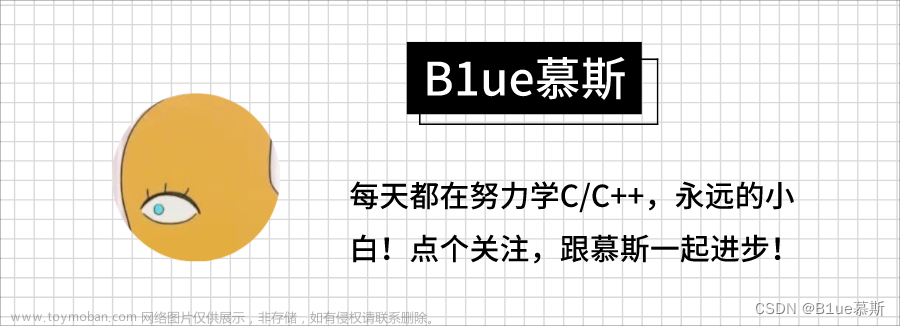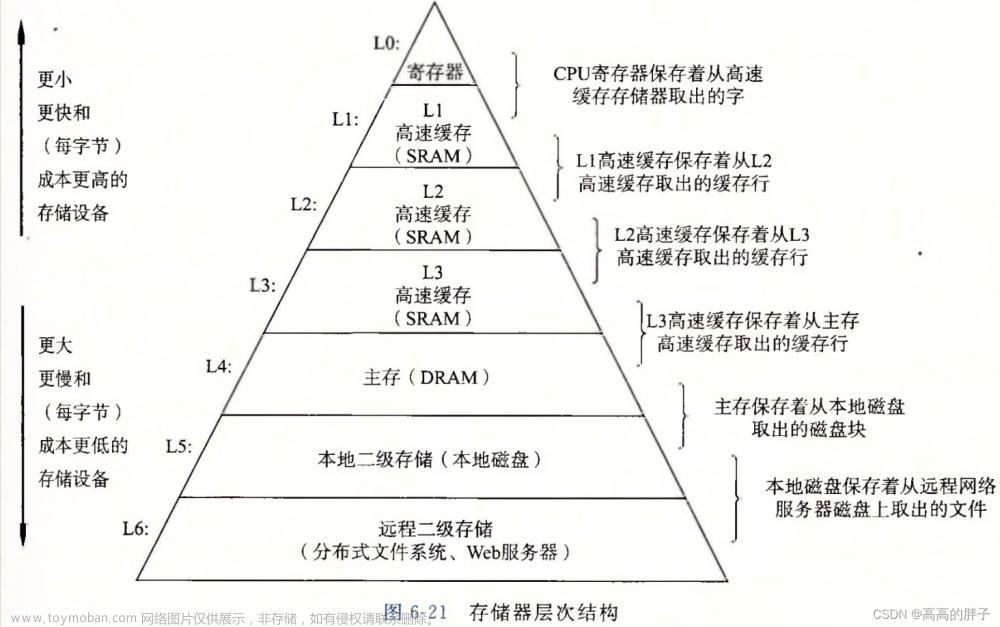
- 魔王的介绍:😶🌫️一名双非本科大一小白。
- 魔王的目标:🤯努力赶上周围卷王的脚步。
- 魔王的主页:🔥🔥🔥大魔王.🔥🔥🔥
❤️🔥大魔王与你分享:很喜欢宫崎骏说的一句话:“不要轻易去依赖一个人,它会成为你的习惯当分别来临,你失去的不是某个人而是你精神的支柱,无论何时何地,都要学会独立行走,它会让你走得更坦然些。”
一、前言
本篇讲述的是八种链表中面试和刷题中最容易出现的链表–无头单向不循环链表,过几天也会出一个性能最好的链表–有头双向循环链表,希望能够帮助你。
下面的链表都是针对无头单向不循环这钟来说的。
链表是线性表的一种,它与顺序表不同的是它在内存中并不是连续存储,而是一个节点对应一个位置,前一个结点存着下一个结点的地址,从而产生了联系。如图:

二、链表实现
1、创建结构体类型
如图所示,链表和顺序表的不同之处:链表每个元素都是一个结点,是一个整体,既包含该位置的数值,又包含下一个位置的地址,但它不用像顺序表一样去记住有几个元素,因为它不是连续存放的,所以这样做根本没有任何意义。因此虽然顺序表和链表都用到了结构体,但他们是完全不同的意思。
代码:
typedef int SListDateType;
typedef struct SeqListNode
{
SListDateType date;
struct SeqListNode* next;
}SListNode;
2、创建结点
每次增加数据,我们都需要调用创建新结点这个函数,它的目的是在堆区开辟一个结点的内存空间,然后把我们新建数据的值赋上去,至于地址,我们在创建时并不知道赋什么,所以先置空,最后返回新建的结构体指针。
代码:
//创建新结点。
SListNode* BuyNewnode(SListDateType x)
{
SListNode* newnode = malloc(sizeof(SListNode));
assert(newnode);
newnode->date = x;
newnode->next = NULL;
return newnode;
}
3、打印单链表
单链表的打印就是从第一个打印,直到最后一个,怎么判断是否结束,那就是最后一个结点指向的是NULL。
代码:
//打印单链表。
void SListPrint(SListNode* phead)
{
SListNode* cur = phead;
while (cur)
{
printf("%d->",cur->date);
cur = cur->next;
}
printf("NULL\n");
}
4、单链表尾插
单链表尾插挺简单的,就是先创建出来这个新节点,然后让原链表最后结点指向新节点就ok了。
//单链表尾插。
void SListPushBack(SListNode** pphead,SListDateType x)
{
assert(pphead);
SListNode* newnode = BuyNewnode(x);
if (*pphead == NULL)
{
*pphead = newnode;
}
else
{
SListNode* cur = *pphead;
while (cur->next)
{
cur = cur->next;
}
cur->next = newnode;
}
}
5、单链表头插
单链表头插,意味着要改变传过来的结构体指针(头指针),我们知道,形参只是实参的临时拷贝,那么如何实现改变实参呢?那就需要指针,但是实参本来就是一级指针,所以我们需要传二级指针,也就是实参(一级指针)的地址,这样才能实现修改。
知道了上面这些,那么剩下的就是让新节点地址赋给实参,然后让新结点指向原来的头结点就好。
代码:
//单链表头插。
void SListPushFront(SListNode** pphead, SListDateType x)
{
assert(pphead);
SListNode* newnode=BuyNewnode(x);
newnode->next = *pphead;//先指向这个,如果先弄下面一步,就找不到原头节点的位置了。
*pphead = newnode;//pphead是二级指针,解引用后就是一级指针,newnode也是一级指针,然后让newnode赋给pphead,这样就改变了实参。
}
6、单链表尾删
单链表尾删很简单,就是把最后的结点释放,倒数第二个结点便成了尾结点,此时它指向的是已经释放的结点,是野指针,我们要让它置空,他也应该置空,因为尾结点要指向空,不然之后用的时候程序不知道什么时候结束。
我们需要首先判断是否只有一个,因为只有一个的话,那就要改变实参了,释放这仅有的结点,让实参的值置空。
代码:
//单链表尾删。
void SListPopBack(SListNode** pphead)
{
assert(pphead);
assert(*pphead);//指针指向的内容不能是空的
SListNode* cur = *pphead;
SListNode* cur_ = NULL;//存倒数第二个结点的位置
if (cur->next == NULL)
{
free(cur);
*pphead = NULL;
return;
}
while (cur->next)
{
cur_ = cur;//保留要释放结点的前一个位置,然后当下面用完cur(释放)后,让cur_(释放后的最后结点位置指向空)
cur = cur->next;
}
free(cur);
cur_->next = NULL;
}
7、单链表头删
单链表头删要让实参变为第二个结点的地址,也就是说要改变实参,所以还是要用二级指针。
代码:
//单链表头删。
void SListPopFront(SListNode** pphead)
{
assert(pphead);
assert(*pphead);
SListNode* first = *pphead;
*pphead = (*pphead)->next;
free(first);
}
8、单链表查找
当我们想在某个值后面插入元素时,我们首先需要直到这个地方的地址,我们才能进行操作。所以便有了查找函数,实现原理就是逐个遍历,出现就返回这个结点地址,如果没出现,就返回空指针。
代码:
//单链表查找。
SListNode* SListFind(SListNode* phead, SListDateType x)
{
assert(phead);//既然查找了,那么就不能为空链表,否则没有意义,这是使用者的问题。
SListNode* cur = phead;
while (cur)
{
if (cur->date == x)
{
return cur;
}
cur = cur->next;
}
return NULL;//上面已经判断不能为空链表,所以这里返回的空指针指的就是找不到,而不是链表为空。
}
9、单链表插入
单链表插入如果时从该位置之后插入,很方便,不需要遍历找上一个结点的位置,直接用传过来的结点的位置进行操作。
但是一般意义上的插入都是在该位置之前,那么就需要遍历,找到上一个位置的结点,因为我们要用,这是单链表的弊端。
☃️该位置之后插入
代码:
//单链表插入(pos之后)。
void SListInsertAfter(SListNode* phead,SListNode* pos, SListDateType x)
{
assert(pos);//插入默认是该链表不为空的,如果想要空的时候插入,用头插函数。
SListNode* cur = phead;
SListNode* newnode = BuyNewnode(x);
while (cur!=pos)
{
cur = cur->next;
}
newnode->next = cur->next;
cur->next = newnode;
}
☃️该位置之前插入(插入正常理解)
//单链表插入(pos之前)。
void SListInsertBefore(SListNode** pphead, SListNode* pos, SListDateType x)
{
assert(pphead);
assert(*pphead);//和刚才同理,链表没有元素的时候插入调用头插函数。
SListNode* cur = *pphead;
SListNode* newnode = BuyNewnode(x);
if (cur->next == NULL)
{
*pphead = newnode;
newnode->next = pos;
}
else
{
while (cur->next != pos)
{
cur = cur->next;
}
cur->next = newnode;
newnode->next = pos;
}
}
10、单链表删除
单链表删除需要找到前一个结点,让前一个结点指想删除位置指向的位置,然后释放要删除的位置即可。
代码:
//单链表删除。
void SListEraseAfter(SListNode** pphead, SListNode* pos)
{
assert(pphead);
assert(*pphead);
SListNode* cur = *pphead;
if (cur == pos)
{
*pphead = pos->next;
free(pos);
}
else
{
while (cur->next!=pos)
{
cur = cur->next;
}
cur->next = cur->next->next;//或者写成cur->next = pos->next;
free(pos);
}
}
-
因为传的pos是一级指针,所以我们无法在函数里修改pos的值,我们只能修改pos指向位置的内容,当我们释放pos后,实参pos还指向释放后的位置,也就变成了野指针,所以我们需要在出函数后让pos置空。

11、单链表销毁
单链表销毁就是释放每个结点的空间,一直到最后结点,注意别释放前没做准备导致释放后找不到下一个结点的位置。
//单链表的销毁。
void SListDestroy(SListNode** pphead)
{
assert(pphead);
SListNode* cur = *pphead;
while (cur)
{
SListNode* pc = cur;
cur = cur->next;
free(pc);
}
}
三、总代码
SeqListNode.h
SeqListNode.h
#pragma once
#include <stdio.h>
#include <assert.h>
#include <stdlib.h>
typedef int SListDateType;
typedef struct SeqListNode
{
SListDateType date;
struct SeqListNode* next;
}SListNode;
//创建新结点。
SListNode* BuyNewnode(SListDateType x);
//打印单链表。
void SListPrint(SListNode* phead);
//单链表尾插。
void SListPushBack(SListNode** pphead,SListDateType x);
//单链表头插。
void SListPushFront(SListNode** pphead, SListDateType x);
//单链表尾删。
void SListPopBack(SListNode** pphead);
//单链表头删。
void SListPopFront(SListNode** pphead);
//单链表查找。
SListNode* SListFind(SListNode* phead, SListDateType x);
//单链表插入。
//pos之后插入。
//不用从头开始查找,比较高效
void SListInsertAfter(SListNode* phead,SListNode* pos, SListDateType x);
//pos之前插入。
//还要从头开始查找,不合适
void SListInsertBefore(SListNode** pphead, SListNode* pos, SListDateType x);
//单链表删除。
void SListEraseAfter(SListNode** pphead, SListNode* pos);
//单链表的销毁。
void SListDestroy(SListNode** phead);
SeqListNode.c
SeqListNode.c
#define _CRT_SECURE_NO_WARNINGS 1
#include "SeqListNode.h"
//创建新结点。
SListNode* BuyNewnode(SListDateType x)
{
SListNode* newnode = malloc(sizeof(SListNode));
assert(newnode);
newnode->date = x;
newnode->next = NULL;
return newnode;
}
//打印单链表。
void SListPrint(SListNode* phead)
{
SListNode* cur = phead;
while (cur)
{
printf("%d->",cur->date);
cur = cur->next;
}
printf("NULL\n");
}
//单链表尾插。
void SListPushBack(SListNode** pphead,SListDateType x)
{
assert(pphead);
SListNode* newnode = BuyNewnode(x);
if (*pphead == NULL)
{
*pphead = newnode;
}
else
{
SListNode* cur = *pphead;
while (cur->next)
{
cur = cur->next;
}
cur->next = newnode;
}
}
//单链表头插。
void SListPushFront(SListNode** pphead, SListDateType x)
{
assert(pphead);
SListNode* newnode=BuyNewnode(x);
newnode->next = *pphead;
*pphead = newnode;
}
//单链表尾删。
void SListPopBack(SListNode** pphead)
{
assert(pphead);
assert(*pphead);//指针指向的内容不能是空的
SListNode* cur = *pphead;
SListNode* cur_ = NULL;//存倒数第二个结点的位置
if (cur->next == NULL)
{
free(cur);
*pphead = NULL;
return;
}
while (cur->next)
{
cur_ = cur;//保留要释放结点的前一个位置,然后当下面用完cur(释放)后,让cur_(释放后的最后结点位置指向空)
cur = cur->next;
}
free(cur);
cur_->next = NULL;
}
//单链表头删。
void SListPopFront(SListNode** pphead)
{
assert(pphead);
assert(*pphead);
SListNode* first = *pphead;
*pphead = (*pphead)->next;
free(first);
}
//单链表查找。
SListNode* SListFind(SListNode* phead, SListDateType x)
{
assert(phead);
SListNode* cur = phead;
while (cur)
{
if (cur->date == x)
{
return cur;
}
cur = cur->next;
}
return NULL;
}
//单链表插入(pos之后)。
void SListInsertAfter(SListNode* phead,SListNode* pos, SListDateType x)
{
assert(pos);
SListNode* cur = phead;
SListNode* newnode = BuyNewnode(x);
while (cur!=pos)
{
cur = cur->next;
}
newnode->next = cur->next;
cur->next = newnode;
}
//单链表插入(pos之前)。
void SListInsertBefore(SListNode** pphead, SListNode* pos, SListDateType x)
{
assert(pphead);
assert(*pphead);
SListNode* cur = *pphead;
SListNode* newnode = BuyNewnode(x);
if (cur->next == NULL)
{
*pphead = newnode;
newnode->next = pos;
}
else
{
while (cur->next != pos)
{
cur = cur->next;
}
cur->next = newnode;
newnode->next = pos;
}
}
//单链表删除。
void SListEraseAfter(SListNode** pphead, SListNode* pos)
{
assert(pphead);
assert(*pphead);
SListNode* cur = *pphead;
if (cur == pos)
{
*pphead = pos->next;
free(pos);
}
else
{
while (cur->next!=pos)
{
cur = cur->next;
}
cur->next = cur->next->next;
free(pos);
}
}
//单链表的销毁。
void SListDestroy(SListNode** pphead)
{
assert(pphead);
SListNode* cur = *pphead;
while (cur)
{
SListNode* pc = cur;
cur = cur->next;
free(pc);
}
}
Test.c
Test.c
#define _CRT_SECURE_NO_WARNINGS 1
#include "SeqListNode.h"
void test1()
{
SListNode* pc = NULL;
SListPrint(pc);
SListPushBack(&pc,0);
SListPrint(pc);
SListPushBack(&pc, 1);
SListPrint(pc);
SListPushBack(&pc, 2);
SListPrint(pc);
SListPushBack(&pc, 3);
SListPrint(pc);
SListPushBack(&pc, 4);
SListPrint(pc);
SListPushBack(&pc, 5);
SListPrint(pc);
SListPushBack(&pc, 6);
SListPrint(pc);
SListPushBack(&pc, 7);
SListPrint(pc);
}
void test2()
{
SListNode* pc = NULL;
SListPrint(pc);
SListPushFront(&pc, 0);
SListPrint(pc);
SListPushFront(&pc, 1);
SListPrint(pc);
SListPushFront(&pc, 2);
SListPrint(pc);
SListPushFront(&pc, 3);
SListPrint(pc);
SListPushFront(&pc, 4);
SListPrint(pc);
SListPushFront(&pc, 5);
SListPrint(pc);
SListPushFront(&pc, 6);
SListPrint(pc);
SListPushFront(&pc, 7);
SListPrint(pc);
}
void test3()
{
SListNode* pc = NULL;
SListPrint(pc);
SListPushBack(&pc, 0);
SListPrint(pc);
SListPushBack(&pc, 1);
SListPrint(pc);
SListPushBack(&pc, 2);
SListPrint(pc);
SListPushBack(&pc, 3);
SListPrint(pc);
SListPopBack(&pc);
SListPrint(pc);
SListPopBack(&pc);
SListPrint(pc);
SListPopBack(&pc);
SListPrint(pc);
SListPopBack(&pc);
SListPrint(pc);
}
void test4()
{
SListNode* pc = NULL;
SListPrint(pc);
SListPushBack(&pc,0);
SListPrint(pc);
SListPushBack(&pc, 1);
SListPrint(pc);
SListPushBack(&pc, 2);
SListPrint(pc);
SListPushBack(&pc, 3);
SListPrint(pc);
SListPushBack(&pc, 4);
SListPrint(pc);
SListPushBack(&pc, 5);
SListPrint(pc);
SListPushBack(&pc, 6);
SListPrint(pc);
SListPopFront(&pc);
SListPrint(pc);
SListPopFront(&pc);
SListPrint(pc);
SListPopFront(&pc);
SListPrint(pc);
SListPopFront(&pc);
SListPrint(pc);
SListPopFront(&pc);
SListPrint(pc);
SListPopFront(&pc);
SListPrint(pc);
}
void test5()
{
SListNode* pc = NULL;
SListPushBack(&pc,0);
//SListPushBack(&pc,1);
//SListPushBack(&pc,2);
SListPrint(pc);
SListNode* pos = SListFind(pc,0);
assert(pos);
//SListInsertAfter(*pc, pos, 9);//pos之后插入。
SListInsertBefore(&pc, pos, 5);//pos之前插入。
SListPrint(pc);
pos = SListFind(pc, 5);
SListEraseAfter(&pc, pos);//删除后要置空
pos = NULL;//这块被释放了,所以置空
SListPrint(pc);
SListDestroy(&pc);
}
int main()
{
//test1();//测试尾插。
//test2();//测试头插。
test3();//测试尾删。
//test4();//测试头删。
//test5();//测试查找,插入,销毁。
return 0;
}
四、总结
 文章来源:https://www.toymoban.com/news/detail-434327.html
文章来源:https://www.toymoban.com/news/detail-434327.html
✨请点击下面进入主页关注大魔王
如果感觉对你有用的话,就点我进入主页关注我吧!文章来源地址https://www.toymoban.com/news/detail-434327.html
到了这里,关于C语言实现链表--数据结构的文章就介绍完了。如果您还想了解更多内容,请在右上角搜索TOY模板网以前的文章或继续浏览下面的相关文章,希望大家以后多多支持TOY模板网!







![[C语言][数据结构][链表] 双链表的从零实现!](https://imgs.yssmx.com/Uploads/2024/04/854886-1.png)
![[C语言][数据结构][链表] 单链表的从零实现!](https://imgs.yssmx.com/Uploads/2024/04/847183-1.png)





